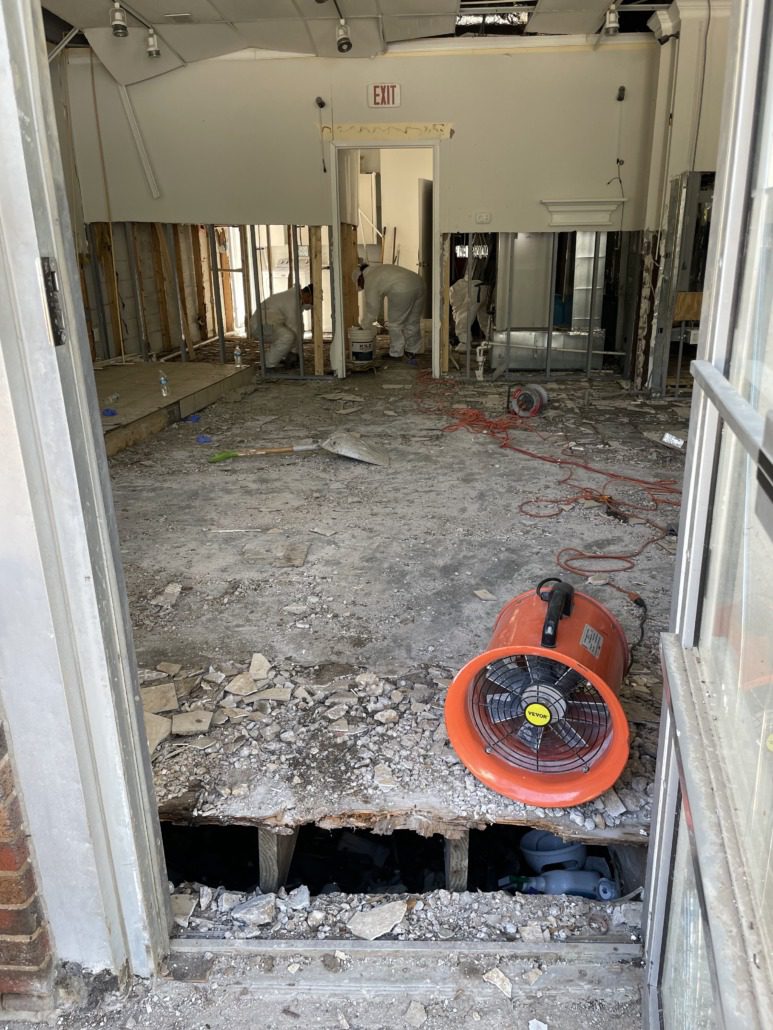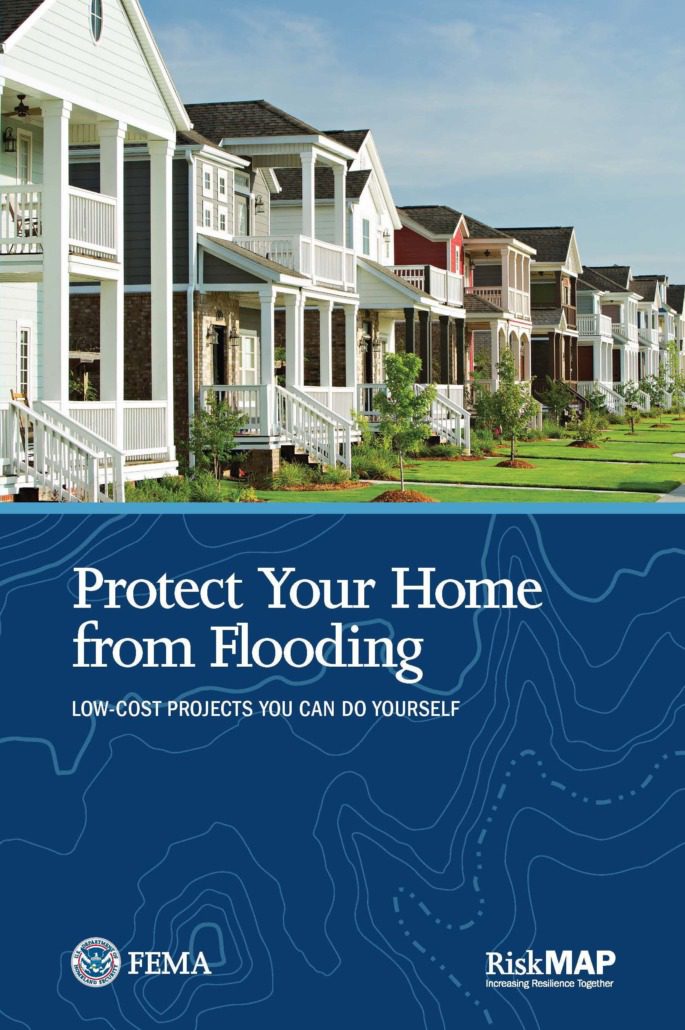Preventing Flood Damage to Our Properties and Neighborhood

In light of the dramatic and devastating damage caused by the September 12, 2023, flood event, when basements were flooded, road surfaces were seriously undermined and two Wyndhurst Station businesses were destroyed, it is a good time to remind readers of measures we can all take to try and avoid or mitigate future problems. Severe weather—the event in September has been referred to as a 500-year storm—is happening more and more frequently as the impact of climate change gets more severe. While we may not entirely avoid flooding damage, particularly given our aging water and sewer lines, there are steps we can take to protect our properties.
The Federal Emergency Management Agency (FEMA) published Protect Your Home from Flooding: Low-Cost Projects You Can Do Yourself in 2020. The publication suggests taking three key steps before you consider any mitigation action:
- Know your risk. To find out if your property is at risk of flooding, enter your address on FEMA’s Flood Map Service Center portal (msc.fema.gov/portal/search).
- Insure your property. Standard homeowners insurance doesn’t cover flood damage. Once you know your risk, consider purchasing flood insurance. FEMA requires Zone AE residents with federal mortgages to buy flood insurance.
- Reduce your risk. Prepare for flood events by following some or all of the suggestions offered by FEMA.
What follows are those suggestions.
- Install a rain barrel, connecting it to your downspouts to collect runoff from your roof
- Elevate equipment like air conditioning condensers and heat pumps to at least 1 foot above the potential flood elevation
- Anchor outdoor fuel tanks to a large concrete slab that weighs enough to resist the force of floodwaters
- Move important documents and other valuable items to a location that is above the potential flood elevation or inside watertight containers
- Seal your foundation and basement walls, and ensure any floor drains are kept free of debris
- Install flood vents, which allow flood water to flow through enclosures like crawl spaces or garages, and make sure the vents are kept free of debris
- Install a sump pump with a battery-operated backup
- Prevent sewer backups by installing backflow valves, which allow water to flow in only one direction, and install plugs in all basement floor drains
“Please remember to be kind to your neighbors! Consulting adjacent property owners is very important when any actions on your property, such as extending downspouts or regrading areas between homes, could affect their property.”
Protect Your Home from Flooding
When a severe storm is forecast, here are some other measures you can take to prepare, according to FEMA:
- Activate flood protection devices (turn on sump pumps, close backflow valves, etc.)
- Shut off electricity at the breaker panel
- Safeguard important paperwork and move valuable belongings to upper floors
- Elevate major appliances onto concrete blocks
- Clean gutters, downspouts, nearby drainage ditches and storm drains
- Clear snow and ice away from your foundation
- Employ temporary flood barriers, like portable flood gates or shields, sandbags, inflatable floodwalls and flood skirts
On October 10, 2024, the Civic League held a meeting with city officials to discuss the September flooding event. Representatives from the departments of Transportation and Public Works offered a few suggestions for residents to consider for our properties and neighborhood. They are included below, along with a few others:
- Planting more trees and plants
- Installing rain barrels or cisterns
- Incorporating rain gardens and swales into your landscaping to slow and redirect water
- Replacing turf lawns, with their shallow roots and compacted soils that limit water absorption, with a pollinator- and wildlife-friendly habitat that does a better job of absorbing rainfall and preventing flooding because of its deeper root systems
- Clearing streets and lanes of debris to ensure it doesn’t end up clogging storm drains
- Replacing impervious surfaces (e.g., concrete parking pads) with pervious pavement
Breaking up impervious surfaces and better controlling stormwater runoff at the schools and institutions in the watershed, and investing in infrastructure improvements to remove or improve the old railroad infrastructure along the Stony Run (particularly at the Wyndhurst Avenue bottleneck), and improve storm drains throughout our community are critical parts of the solution. In the meantime, taking the steps listed above may mitigate flooding damage.
Additional Resources
- Baltimore Office of Sustainability’s Flood Protection and Preparedness resources (baltimoresustainability.org/flood-preparedness-2)
- Baltimore Department of Public Works’ Stormwater Fee Credit Program (publicworks.baltimorecity.gov/stormwater-fee/reducing-stormwater-fee)
- Baltimore Department of Public Works’ Green Resources and Outreach for Watersheds (GROW) Center Program (publicworks.baltimorecity.gov/grow-center)






